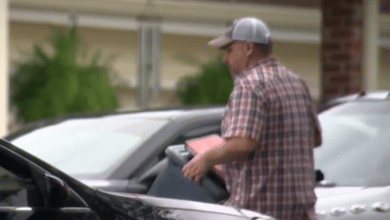Kin of inmates at Ecuador prison where 116 died can’t get answers

By Cristina Bazan
Guayaquil, Ecuador, Oct 1 (EFE).- Feelings of helplessness were taking hold Friday among inmates’ families waiting to find out whether their loved ones were among the 116 people killed this week in an armed clash inside the walls of Ecuador’s most dangerous prison.
“My son was in the cellblock where there were the most deaths and I want to know if he’s alive or not. They don’t give us any information, I’m desperate,” Isabel Zambrano told Efe in Guayaquil’s Samanes Park.
The vast expanse on the outskirts of Ecuador’s largest city is home to a coliseum that the Guayas provincial government has converted into a support center for prisoners’ families.
Zambrano arrived here Thursday from the nearby city of Duran hoping for news about her son, locked up for drug trafficking.
Authorities have yet to assemble a complete list of those who died in Tuesday’s mayhem and the bodies, many of them badly mutilated, are 10 km (6 mi) away at the morgue.
Only a handful of the dead have been positively identified and most of the inmates’ families remain in the dark.
The bloodbath, which also left 80 people wounded, prompted President Guillermo Lasso to declare a 60-day state of emergency in the Ecuadorian penal system and at his direction, the military have taken charge of the prison in Guayaquil.
The Zambrano family’s last contact with Isabel’s son was on Tuesday, when he telephoned his sister from prison.
“He told her that we should take care: ‘Take good care of yourself big sister and take care of my mama,’ and then the shooting started,” Isabel recounted.
Antonio Mojarrango told Efe that authorities are placing the burden of identifying the dead on the prisoners’ families, asking them to provide photographs for use by the medical examiners.
“They ask us what tattoos the prisoner has and how many he has, but it shouldn’t be this way,” he said. “They have to organize this properly. The majority of us are poor and we have things to do.”
Ecuadorian media have spotlighted the stories of the families, notably that of a man who had four sons locked up at the Guayaquil, all but one of them in Cellblock 5, the epicenter of the violence.
“They themselves don’t know how many dead there are. They don’t tell us anything,” Rosa Lastra says inside the coliseum.
She is seeking information about a nephew serving time for drug dealing as a result of a 2014 law that converted what used to be a civil offense into a criminal one.
“It’s been three days already. I’m not eating, not sleeping, worried about my nephew. But here they give us no response because they don’t care. They say that they (the inmates) are bums and let them die,” Lastra complains to Efe.
Police Col. Henry Coral said that authorities need information from prisoners’ families to identify the dead because of the lack of a comprehensive data base regarding the inmates.
“We ask them for height, build, color of hair and eyes, whether or not the person has something distinctive such as scars or surgeries. Or tattoos that might be unique,” the officer told Efe.
The process of identifying the bodies could take several days, he said, noting that each autopsy requires two hours.
The government has brought in medical examiners from other parts of the country to assist in the grim task, Coral said, as well as psychologists and social workers to help the families cope. EFE cb/dr





